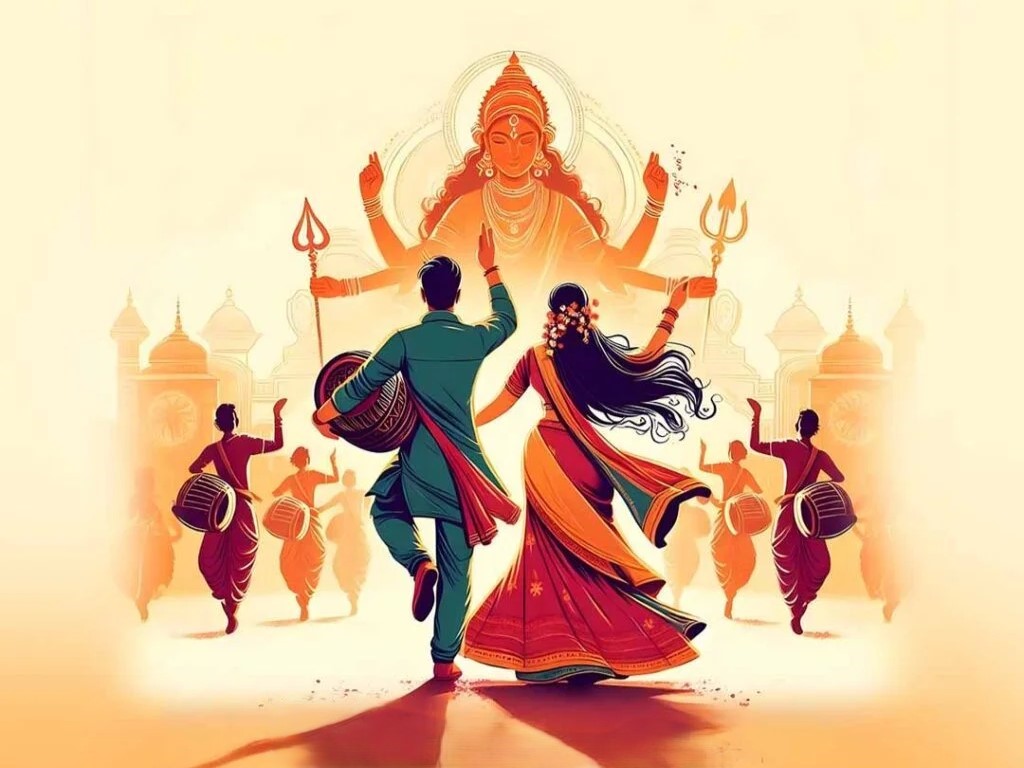Celebrating Navratri: A Festival of Devotion, Dance, and Vibrance
November 21, 2024

Navratri, meaning "nine nights," is one of the most celebrated festivals in India. Rooted deeply in Hindu tradition, it is a time of spiritual cleansing, devotion, and exuberant festivities. Spanning nine days and nights, Navratri is dedicated to the worship of Goddess Durga and her nine divine forms. The festival signifies the triumph of good over evil and fills the air with joy, music, and colors.
The Spiritual Essence of Navratri
At its heart, Navratri is a celebration of the divine feminine power, also known as Shakti. Each of the nine days is dedicated to a different form of the Goddess:
Day 1 - Shailaputri: Goddess of strength and purity, symbolizing a fresh start.
Day 2 - Brahmacharini: Known for her devotion and wisdom.
Day 3 - Chandraghanta: A symbol of beauty and bravery.
Day 4 - Kushmanda: The creator of the universe.
Day 5 - Skandamata: The nurturing mother of Skanda (Kartikeya).
Day 6 - Katyayani: The fierce form of Durga, known for destroying evil.
Day 7 - Kalaratri: The remover of darkness and negativity.
Day 8 - Mahagauri: A symbol of peace and intelligence.
Day 9 - Siddhidatri: The giver of supernatural powers and knowledge.
Devotees observe fasts, perform pujas, and chant mantras to honor the Goddess and seek her blessings for prosperity, health, and happiness.
Rituals and Traditions
1. Ghatasthapana (Kalash Sthapana)
The festival begins with the installation of a Kalash (sacred pot), symbolizing the universe and the Goddess' energy. This ritual marks the beginning of Navratri and involves lighting the Akhand Jyoti (eternal flame), which burns continuously for nine days.
2. Fasting and Prayers
Fasting is a common practice during Navratri, believed to cleanse the body and soul. People follow a sattvic diet, abstaining from grains, onions, and garlic. Daily prayers and recitations of Durga Saptashati or Devi Mahatmya are conducted to invoke the Goddess's blessings.
3. Garba and Dandiya Nights
Navratri evenings are synonymous with vibrant Garba and Dandiya dance performances. Originating from Gujarat, these folk dances have gained popularity nationwide. Participants dress in colorful traditional attire and dance to rhythmic tunes, celebrating the Goddess in a lively spirit.
The Significance of Colors
Each day of Navratri is associated with a specific color, symbolizing the qualities of the Goddess. Devotees often dress in these colors as a mark of respect and devotion. For example, red represents power, white signifies purity, and green reflects growth and fertility.
Navratri Across India
The festival is celebrated differently across regions:
West Bengal: Known as Durga Puja, grand pandals are set up, and idols of Goddess Durga are adorned beautifully.
Gujarat: Famous for Garba and Dandiya, the state comes alive with dance and music.
Tamil Nadu and Karnataka: Houses are decorated with Golu (dolls' arrangement), and cultural programs are organized.
Himachal Pradesh: The Kullu Dussehra marks the culmination of Navratri with processions and festivities.
The Culmination: Vijayadashami
The tenth day, known as Vijayadashami or Dussehra, marks the victory of good over evil. It is celebrated as the day Lord Rama defeated Ravana or Goddess Durga vanquished Mahishasura. Effigies of Ravana are burned, symbolizing the destruction of evil.
Navratri: A Festival Beyond Religion
Navratri isn't just a religious festival; it is a cultural extravaganza. It brings people together, transcending boundaries and differences. The lights, music, and energy create an atmosphere of harmony and joy, reminding us of the importance of unity and faith.
Conclusion
Navratri is more than just a festival; it's a journey of self-purification, celebration, and gratitude. As the Goddess triumphs over evil, it inspires us to conquer our inner demons and embrace positivity. Whether through fasting, dancing, or simply soaking in the festive vibes, Navratri offers something for everyone.
So, this Navratri, let’s come together to celebrate the divine energy, cherish the cultural heritage, and spread the message of goodness and light! ????
